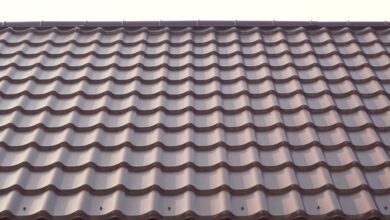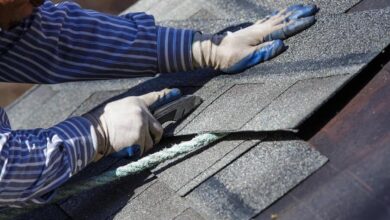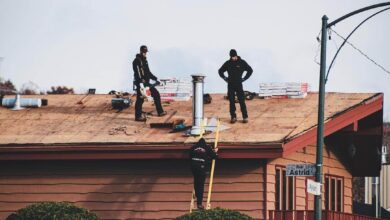Can You Use House Wrap for Roofing? Exploring the Possibilities
The Ever-Present Need for Effective Roofing

The roof over your head is one of the most vital components of any structure. As the barrier between you and the elements outside, having durable and resilient roofing is paramount for comfort, protection, and minimizing costly repairs down the line. With such an essential role to play, using the proper roofing materials right from the start is crucial. This begs the question – in a pinch, could you use the readily available house wrap from the walls of a structure as makeshift roofing instead?
House Wrap Has Limitations for Roofing Use
House wrap does possess some properties that make it potentially usable as a roofing material in certain limited applications. However, it lacks critical waterproofing abilities and is not engineered for longevity against rain, sun, wind, and other environmental factors impacting roofs. Using house wrap for roofing could lead to moisture issues and ultimately damage the integrity of the structure if not paired with appropriate membranes or surfaces. In most cases, purpose-built synthetic roofing underlayments or even traditional building papers and felts would be superior choices. But with proper precautions, house wrap could have some viability as an occasional substitute.
Understanding House Wrap
Definition and Purpose
House wrap, also referred to as weather-resistive barrier (WRB) is a synthetic material designed to be installed on exterior walls underneath cladding and siding materials. It serves several key functions:
- Acts as an air barrier to reduce drafts and heat loss/gain
- Forms a vapor barrier to control diffusion of water vapor
- Prevents bulk water intrusion from rain and moisture
- Allows walls the ability to breathe and dry out with vapor permability
By controlling air flow and humidity, quality house wraps enhance energy efficiency, indoor comfort, and durability of wall assemblies. Common locations to install house wrap are on stud walls of new construction or underneath new siding projects. Leading manufacturers include DuPontTM Tyvek®, RPM Builders Wrap, Owens Corning WeatherLock®, and Thermo-Ply Building Wrap.
Types of House Wrap
There are a variety of house wrap products on the market targeting different needs and applications:
Tyvek®
- One of the most widely recognized and used house wrap brands
- Manufactured by DuPont using high-density polyethylene fibers
- Offered in varieties focusing on air flow, water resistance, versatility, and fire protection
RPM Building Wrap
- Features advanced UV stabilization technology for enhanced outdoors durability
- Laminated layers provide tear and puncture resistance
- Economical choice for basic weather-resistive barrier applications
Owens Corning WeatherLock®
- Unique grid pattern allows moisture vapors to escape while still repelling bulk water
- Can be installed in a wider range of temperatures due to material flexibility
- National Gypsum also offers a version called Gold Bond eXP® Housewrap
Thermo-Ply Building Wrap
- Comprised of cross-laminated polyethylene film with reinforced scrim backing
- Bonds directly to sheathing and adhesive products saving time and labor
- Offers highest perm rating in its class for breathable weather protection
House Wrap as Roofing Underlayment
While sharing some properties with roofing underlayments, using house wrap specifically designed for walls as makeshift roofing does come with inherent limitations and risks.
Waterproofing Properties
A primary purpose of roof underlayment, such as roofing felt, is to provide a continuous waterproof barrier protecting the roof deck and interior of a building. The underlayment is supplemented by the exterior roofing material for the actual defense against bulk water.
In contrast, the design intent for house wraps in wall applications is typically not true waterproofing but rather draining bulk water while controlling vapor diffusion. DuPont, makers of Tyvek, states its house wrap products are “water-resistive barriers, not waterproof barriers.” The manufacturer advises against using Tyvek wraps as roofing membranes since they do not prevent water penetration indefinitely when exposed.
So while house wraps share similarities like weather resistance, their limitations regarding waterproof durability could risk water intrusion on roofs over time.
Vapor Permeability
An advantage house wraps do possess for some types of roof assemblies is a high vapor perm rating. This measure defines how readily water vapor penetrates through a material. The higher the perm rating, the more “breathable” the wrap is.
Vapor permeability can be beneficial with roof designs incorporating ventilation, allowing humidity buildup from the interior to evaporate through the underlayment and escape rather than causing condensation issues. This breathability helps wall wraps resist liquid water when used properly while enabling vapor release.
But the same vapor permeability allowing dissipation of humid air could potentially also permit wind-driven rain or melting snow to penetrate, depending on exterior pressure and exposure levels. Performance would remain contingent on appropriate roofing being installed overtop.
Considerations for Use
When weighing utilizing house wrap for makeshift roofing instead of purpose-built underlayment, several factors need deliberation:
Compatibility
- House wraps are engineered for vertical sidewall installation, not angled roof surfaces. Product warranties may become invalid as well.
- Performance against precipitation and UV exposure long-term on a roof would need verification.
Trapped Water
- Areas where overlapping layers or penetration fasteners impede drainage could lead to trapped moisture, condensation, or leaking indoors.
Manufacturer Recommendations
- Most house wrap materials lack official certification or manufacturer approval for roofing usage. Consult directly for technical guidance.
- Any liability, warranty, or performance specifications offered would be deemed void if not used as intended.
So prudence should be taken if attempting to substitute house wrap on roofs instead of options specifically engineered for roof assembly integration and drainage.
Alternatives to House Wrap for Roofing
Rather than taking a chance on unsuitable materials, purpose-made roofing underlayment or even building papers would be far more appropriate to use beneath roof coverings.
Roofing Underlayment
The roofing industry has access to underlayment products tested and verified to withstand roof environments while actively shedding precipitation until roofing finish materials are installed. Two common categories are:
Asphalt Shingle Underlayment (Felt Paper)
- Economic option meeting minimum roof underlayment building code requirements
- Graded from Type 1 (lightest) to Type 30 (heaviest) based on asphalt saturation weight
- Offers basic water resistance but requires roof covering soon after install
Synthetic Underlayment
- Woven or composite sheets made from polyethylene, polypropylene, or polymer blends
- Resists tearing, maintains integrity when wet, and installation friendly
- Provides secondary “emergency” water protection if shingles damaged
- More expensive initially but longer-lasting than asphalt felt
Roofing underlayments are tested to handle water, UV, and foot traffic damage while allowing roofs to properly ventilate. Products rated above ASTM D226 Type 1 felt offer increasingly better protection. This makes them smart substitutions before the roof surface is water-tight.
Synthetic Roofing Underlayment
An especially ideal option is to utilize synthetic roofing underlayment rather than basic builder’s felt paper. Modern materials like DuPontTM Tyvek® Pro, Owens Corning® Deck Defense®, or Tri-Flex Xtreme® offer professional-grade performance.
Benefits of advanced synthetic underlayments include:
- Superior water resistance from materials like polyethylene or polymer blends
- Increased strength and durability against foot traffic, punctures, tears
- Enhanced UV light protection lasting up to 6 months uncovered if needed
- Lightweight and easy to install benefitting contractors through labor savings
- Long-term warranties available when installed per manufacturer requirements
Synthetic roofing underlayments provide rugged, resilient protection against bulk water intrusion while helping roofs breathe. Products rated above ICC AC-188 withstand stretching, retardation, cycling, UV exposure, ice damming, and elevated temperatures expected on roof assemblies. This makes them wise investments where roof performance is paramount.
Conclusion
While house wrap could potentially function temporarily as roofing underlayment in a pinch, it lacks waterproofing capabilities for long-term durability. Trapped moisture or premature breakdown could occur depending on environmental factors. Roofing professionals instead recommend utilizing purpose-engineered underlayments meeting ASTM or ICC guidelines, with synthetic polymer-based varieties offering premium performance for minimal additional cost. But if selecting house wrap as a substitute, take precautions such as minimizing seams/penetrations, using enhanced exterior finishes promptly, and verifying with the manufacturer first. With smart planning, even unconventional materials might serve as a short-term safeguard when ideal options are unavailable. But for critical roof protection from the elements, genuine synthetic underlayments are best for saving money, labor, and headaches over time.




